Autonomous heating in an apartment: comparison of different arrangement options
By installing autonomous heating in the apartment, the owners increase the comfort of their home and save on utility bills.Of course, you will first have to decide on the type of heating system, create a project and obtain the necessary permits from utility services.
But the efforts and labor costs are justified over time, and the room becomes warm and cozy all year round for less money. Which heating option should I choose and what will be required to install it? Our article is devoted to these issues. We will also consider in detail the procedure for documenting the transition to autonomous heating.
The content of the article:
General description of the autonomous system
An independent heating system is equipment for heating a living space that is not connected to general mains networks.
When properly implemented, the complex provides property owners with optimally comfortable living conditions and makes it possible not to depend on interruptions in the centralized supply of heating resources.
Among the main advantages of individual heating systems are the following:
- instant adjustment of the heat level in the apartment and the ability to set the heating temperature personally for yourself;
- saving money on utility bills;
- operational simplicity and accessibility;
- high level of efficiency and high-quality heat transfer;
- reliability, safety and durability of equipment.
It is these parameters that attract consumers and make autonomous systems in demand.

Types of independent heating units
The most popular autonomous heating units include heating boilers, "warm floor" systems, working on different types of resources, solar panels, collectors and heat pumps. In a private home, you can install any of these heating options or even combine a complex system of 2-3 types of equipment.
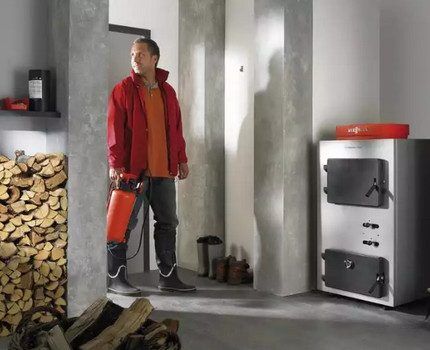
In an apartment building, the situation is more complicated and the use of most of the above heating units is immediately eliminated for objective reasons.
Some types of equipment cannot be installed in an apartment, either from a technical or practical point of view. The use of others is limited by state and municipal legislation, and others may interfere with the interests and comfortable life of neighbors living nearby.

These nuances significantly narrow the search for suitable equipment, ultimately reducing it to 2-3 heating systems. Each of them has its own specific advantages and small but significant disadvantages.
The choice of the best option occurs individually for each case, taking into account the temperature characteristics of the region, the area and layout of the room to be heated, the availability of heating resources, the specific power and efficiency of the working units, as well as the total cost of installation and installation activities.
Features of choosing a heat source
Choosing a suitable heat source for autonomous heating in an apartment is a responsible and serious issue. Inattention to the situation will lead to the fact that the new heating system simply will not cope with the assigned tasks and will not be able to provide the required level of comfort in the living space.
Heaters for cold areas
If the property is located in a region characterized by harsh winters and aggressively low temperatures, only autonomous equipment running on mains gas will provide maximum efficiency and a high level of heat compared to central heating systems.

All other sources of thermal energy will not provide tangible benefits, and the efforts spent on purchasing equipment, remodeling the premises and obtaining permits will be in vain.
Heating systems in warm regions
In areas with a milder, warmer climate, in addition to mains gas, it is important to use electricity for heating. Systems operating on this resource are distinguished by ease of use and a high level of safety, but they cannot be called economical. With direct heating, the equipment “winds up” a decent amount, and utility bills cost the owners a pretty penny.
In order to spend energy wisely and not spend a lot of money on bills every month, owners are recommended to install heat pumps. The operating principle of these progressive devices is not based on direct heating of air, but on pumping a thermal resource from a low-potential source.
This functionality allows you to reduce electricity costs by 3-5 times, without reducing the level of comfort in residential premises.
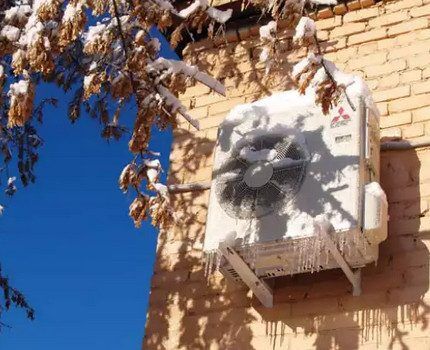
However, due to the specific location and layout, in apartment buildings there is objectively no possibility of installing pumps that use geothermal heat or the energy of non-freezing open reservoirs.Equipment that heats the room by extracting heat from the surrounding air remains available for installation in apartments.
Another good option for heating city apartments is a “warm floors” system that runs on electricity. But its arrangement requires significant financial resources and increases the load on the central power grid.
If the system is intended to be used as the main source of heating, it must occupy at least 70% of the total area of the room. Otherwise, it will not be possible to achieve uniform, comfortable heat throughout the entire apartment.
Legal nuances of the issue
You can’t just change central heating to an autonomous system. First, you will need to notify the local authorities of your desire in writing and wait for a response from them. Whether it will be positive is unknown. The administration may refer to Art. 190 Federal Law and refuse the tenant’s request.
In court, such a verdict is recognized as unfounded, based on a government decree N 307 dated 04/16/2012, which examines in detail the procedure for connecting heat supply systems. This document describes in detail which local sources of thermal energy are allowed and which are prohibited for installation in apartment buildings.
If a modern boiler is selected for installation and meets the requirements for equipment for installing a home heating system, there is no reason to refuse the installation to the resident.
Documents for obtaining permission
To correctly abandon centralized heating and switch to autonomous heating, you will have to collect a package of documents.
It includes:
- statement about the desired reconstruction of the heating system;
- title documents for ownership of the apartment where it is planned to install new equipment;
- technical passport clearly describing the parameters and layout of the premises (original or notarized copy);
- project for renovating an apartment to accommodate modified heating communications;
- written consent of all residents registered in the apartment;
- expert opinion of the department for the protection of monuments on the admissibility of work on the reconstruction of the premises.
Based on these papers, the authorities issue permission to disconnect the client from city communications.
The process of registration of autonomous heating
To order technical conditions for the installation of individual gas heating, written permission to disconnect the apartment from central communications is sent to the local gas distribution company.
Within 10 days, specialists study the technical feasibility of installing the equipment and give the go-ahead (or refusal) for the actual installation of the system.
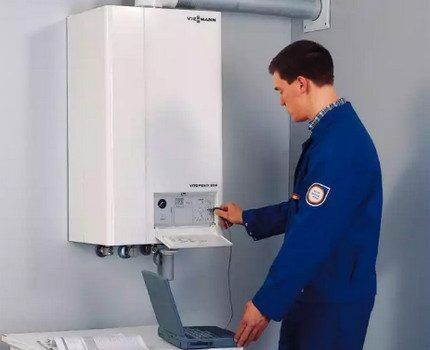
When the documents are received, the owners purchase a certified heating boiler and contact the design bureau to prepare an equipment installation diagram, taking into account all technical conditions, safety rules and features of a particular room.
At the same time, the heat supply organization is making a project for correctly disconnecting housing from centralized communications. The basis for the procedure is a letter from the HOA confirming the authorities’ permission to transfer the apartment to an autonomous heating system.
Having all the necessary documentation in hand, property owners go to the fire department and there they receive a certificate confirming the fire safety of the developed project.

Then the papers are submitted for approval, and the local administration reviews the application within 45 days, and then allows or prohibits the conversion of the premises for autonomous heating. The reason for refusal is Art. 27 LCD (not a complete package of documents provided). This decision can be appealed in court or, adding the necessary certificates, you can reapply for approval.
Another serious reason is the inability to install a chimney or ventilation system that meets certain requirements.
How to calculate heating for an apartment?
To obtain the optimal temperature in the apartment, it is important to correctly calculate the required specific power of the heating equipment before installing the system.
In order for the result to be correct and correspond to reality as closely as possible, real parameters must be taken into account.
All calculations are carried out according to the formula:
boiler = S * Wsp. / 10 m²,
Where:
- S - total area of the room to be heated;
- W — basic boiler power per 10 m².
The data obtained is compared with the average power density current in the region, and based on the results, a suitable boiler is selected.
Boilers for individual gas systems
Boilers that use mains gas are the most practical option for installing an autonomous heating system in a city apartment, provided that the power is selected correctly. We recommend that you read example of power calculation gas boiler.
The units are distinguished by a high level of efficiency, operate reliably in intensive use and serve their owners for a long time.
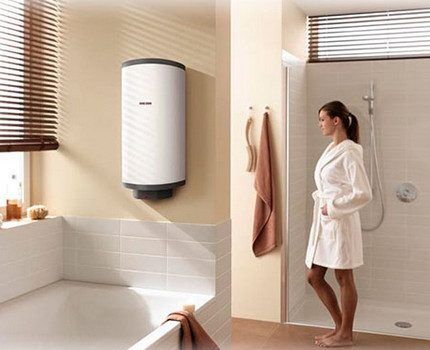
Modern models are equipped with a closed combustion chamber, convenient electronic ignition and a programmable thermostat. Extensive functionality helps maintain a suitable coolant temperature in the system around the clock, reducing or increasing it as needed.
Features of single-circuit devices
Single-circuit gas boilers operate only for heating. They do not have the function of providing housing with hot water. In order to be able to not only live in a warm room, but also use hot water in the required volume, customers purchase additional capacious tanks with a built-in heat exchanger (indirect heating boiler) and connect them to the gas boiler.

Single-circuit boilers are usually connected to a chimney with natural draft.In apartments without a chimney, progressive turbocharged boilers or parapet modules are installed, equipped with a function for forced removal of the generated carbon monoxide outside the living space.
Nuances of dual-circuit equipment
Double-circuit gas boilers are very popular among consumers. These units have an additional built-in heat exchanger and uninterruptedly provide the apartment not only with useful heat, but also with hot water.
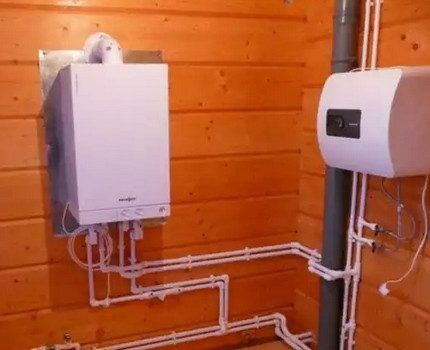
The basic power of the equipment varies from 17 to 35 kW. The actual power level is affected by the number of hot water taps located in the heated room.
In order not to miscalculate the specific power and ability of the system to heat the desired room, the boiler is always purchased with a reserve. This makes it possible to maintain the proper level of heat in the apartment and use hot water in the most comfortable mode.
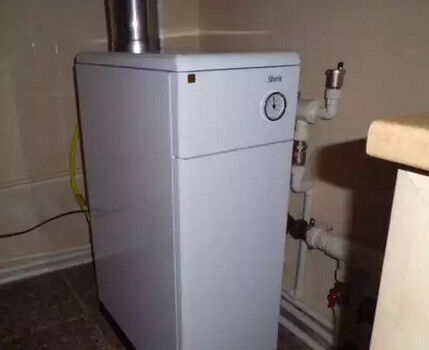
It is recommended to purchase equipment only from official manufacturers who have quality certificates for the product and provide a guarantee for their products.The serial number stamped on the certified boiler must match the one indicated in the accompanying documents. If the numbers on the unit and in the passport differ, you should refuse the purchase.
Pros and cons of gas installations
Modern models of gas boilers are almost completely automated. After installation in the chosen location and configuration of all functions, they work completely autonomously and do not cause any inconvenience to the owners.
The built-in safety control system reduces to zero potential gas leaks and all the unpleasant moments associated with such a force majeure situation.
A wide range of equipment on the market allows consumers choose the best and the most convenient option for yourself and purchase it at a very reasonable price. The dimensions of the products allow you to find a suitable device both for a small apartment with a complex layout, and for spacious apartments.

The boiler operates very quietly and does not disturb either neighbors or apartment owners. The high level of efficiency of the module provides a comfortable warm atmosphere in the living room and allows you to always maintain the selected temperature level.
Among the shortcomings of the equipment, the following items are primarily noted:
- Potential for gas explosion.
- Increased requirements for the arrangement of the ventilation system.
- Mandatory periodic cleaning of exhaust ventilation ducts from burning, soot, grease and other combustion products.
- Permission from special authorities for the installation of a coaxial chimney on the facade of an apartment building, removing the burnt resource from the premises.
- Constant increase in prices for household gas for the population.
But, despite these disadvantages, many consumers dream of installing gas autonomous heating in their apartment. Residents of cold northern regions especially strive for this, where full heating of premises with other resources is simply impossible.
Autonomous electric systems
Such types of electric heating equipment as a boiler, a “warm floor” system and a heat pump are considered relevant for apartments. They can be used individually or combined to achieve maximum heating effect.
Option #1 - advantages of using an electric boiler
The electric boiler has small dimensions and a compact shape. This allows it to be placed even in small rooms with complex internal layouts. During operation, it does not emit any harmful substances and does not require a separate exhaust system. Easy to install and demonstrates complete fire safety.
We recommend that you familiarize yourself with the principles and heating device diagrams based on an electric boiler.
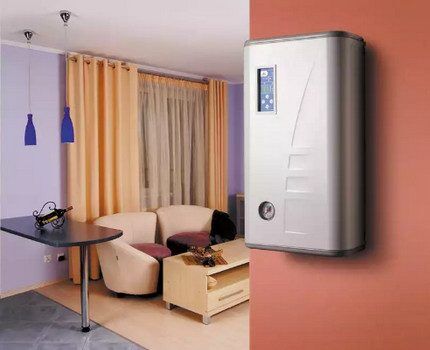
Comfortable control of the unit is provided by a thermostat. It allows you to set a certain level of heating and makes it possible to heat the room in the most suitable mode.
An electric boiler has virtually no drawbacks, but is vulnerable to power surges. Therefore, for correct and long-term operation it requires a reliable stabilizer.
Option #2 - advantages of the “warm floor” system
Typically, an electric “warm floor” system serves as an addition to the main heating equipment. It is installed in rooms with high levels of humidity or placed in children's rooms and bedrooms.
We recommend that you read the instructions for electrical system installation warm floor.

To use a “warm floor” as the main source of heating, you will have to equip most of the usable area of the apartment with it. Otherwise, the efficiency will be too low and will not allow you to create truly comfortable living conditions.
Option #3 - advantages of heating an apartment with a heat pump
Heat pumps such as "air-to-air" or "air-water". They extract low-grade thermal energy from the environment and convert it into high-potential energy.
However, the operation of such equipment is effective only in fairly warm regions, where the air temperature in winter does not fall below -25 degrees.

Conclusions and useful video on the topic
Review about an autonomous heating system from a real user.The author explains in detail how practical and convenient it is to obtain heat and hot water in a three-room apartment by using a gas double-circuit boiler.
Overview of an autonomous heating complex consisting of an electric boiler and a “warm floor” system. Pros and cons of combining two types of heating equipment.
Useful tips for choosing a gas boiler for arranging a heating system in an apartment. Nuances and features of various heating devices.
Installing autonomous heating in a city apartment is a long process that requires significant effort and financial resources. The most difficult moment is obtaining permits to disconnect from centralized networks and subsequent redevelopment of the premises for a new system.
But you will only have to go this route once, and then you will no longer be dependent on interruptions in the heat supply. In addition, it will be possible to use energy resources more productively, save on utility bills and set the most comfortable level of comfort in the apartment.
Do you want to switch to an autonomous type of heating, but do you still have a number of questions that we did not touch upon in this material? Ask them in the comments under the article - our experts and site visitors who are competent in this matter will be happy to share their knowledge and experience with you.




In our city, autonomous heating is very popular, winters are mild. It’s quite easy to “jump” even from the central one; the process is streamlined. We ourselves have a gas system according to the project, we have a double-circuit boiler. In the winter months the difference in utilities is huge, in the warmer months it is smaller, but also not bad, because...Hot water from thermal power plants is expensive.
Plus, we can turn on our heating even in summer if it’s too cold or humid.
It is not clear from the commentary where and in which city it is so easy to switch to individual heating.
In our Murmansk region, people, too, since 2000, or even earlier, have switched to individual heating in their apartments. And since 2017, the resource supplying organization Murmanenergosbyt JSC has been winning cases in the courts against apartment owners who switched to individual heating, citing the fact that in rules No. 354 for the provision of utility services there is no possibility of charging separately for heating an apartment and general house needs.
We reached the Supreme Court of the Russian Federation and everything was in vain, until the OFAS for the Murmansk region. did not issue an order banning billing to individual heaters. But these instructions are not a decree for Murmanenergosbyt JSC - it gives unsubscribes and continues to issue invoices. What should I do?
Somehow I read you and I no longer wanted to consider the possibility of switching to autonomous heating. Courts, proceedings, nerves - are the savings worth all this? Utility workers will hang themselves for every penny.
Hello. Once again I studied Resolution 354 far and wide and did not find “the impossibility of charging separate fees”:
«In an apartment building that is equipped with a collective (common building) heat metering device and in which at least one, but not all residential or non-residential premises are equipped with individual and (or) common (apartment) heat energy metering devices, the amount of payment for the heating utility service determined according to formulas 3(1) and 3(4) of Appendix No. 2 to these Rules based on the readings of individual and (or) general (apartment) and collective (common house) heat energy meters«.
In accordance with Article 539 of the Civil Code, the owner of the premises must pay for the services that were provided to him. If the heating is autonomous, then no central heating services were provided:
«Under an energy supply agreement, the energy supplying organization undertakes to supply energy to the subscriber (consumer) through the connected network, and the subscriber undertakes to pay for the received energy, as well as to comply with the regime of its consumption stipulated in the agreement, to ensure the safe operation of the energy networks under its control and the serviceability of the devices and equipment used by it related to with energy consumption«.
What kind of unsubscribes are there and what are they specifically motivated by? There must be a written explanation.